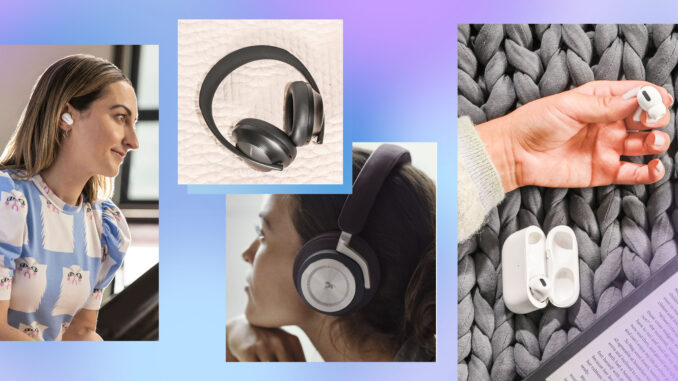
Table of Contents
Comfort and fit
It is critical to be at ease. Any headphones will feel great when used momentarily, but many can become uncomfortable when worn for extended periods. Before deciding on comfort, wear the headphones for at least 20 minutes. When choosing closed-back, circumaural headphones, the larger the ear cups, the better. Smaller is better for headphones that rest on your ear, and fabric cushioning or leather helps reduce the pressure. Long-term comfort is affected by weight; lighter headphones are often more pleasant. The super-light portable headphones with foam padding are great for long hours of listening. The headband also has an impact on comfort. Most headphones have an over-the-head style headband, but there are also behind-the-neck models available. Earbuds do away with the band entirely, making them more comfortable. Whatever type of headband you choose, it should be adjustable. The rotating cup, which is especially useful on over-the-ear headphones, is another element that improves comfort. You may adjust them to fit your head and boost comfort.
Portability
Usually, portability isn’t an issue—get the lightweight portables made for listening while exercising. Heavier closed-back circumaural is typically employed for traditional fixed studio work. However, laptop computers and tiny interfaces have made on-location recording more popular in recent years. This application necessitates the use of larger, closed-back, sealed-cup headphones. Fold-up designs are more portable and keep the headphones safe while in travel. If your recording headphones are going to be transported, you should have some form of case for them.
Durability
You want your headphones to last a long time. Unfortunately, durability is frequently associated with increased weight. Light headphones are easier to sit on or snap in half. You just have to be careful with them and keep them in a secure case while not wearing them. Check the hinges for sturdiness if they are fold-ups. Are the cables thick and sturdy or thin and delicate? If you buy more expensive headphones, check out if replacement components are accessible. It is far less expensive to replace a wire or ear pads than to replace a full set.
Cables
Check that the cable is long enough for your needs. However, if feasible, avoid exceedingly long cables because they can degrade music quality by lowering the volume and introducing noise, as well as getting more easily tangled. A higher-quality pair of headphones would most likely feature a shielded wire that reduces noise. If you buy headphones with a cable that is too short, you can always add an extension cable, but make sure the extension cable is of comparable quality as the cable from the headphones. Additionally, you should add the desired length with a single wire rather than two shorter ones, as multiple connections can weaken the signal. Another factor to consider is single-sided versus double-sided wires. Internal circuitry in single-sided designs transports signals to the proper earpieces. Most people prefer one-sided designs since double-sided designs can become tangled.
Keep in mind that you get what you pay for.
More expensive headphones are typically built with higher-quality materials and superior engineering, which improves sound quality. $30 headphones are good, but not as good as $60 headphones. You may hear things in your music that you’ve never heard before in the $80-90 area. Earbuds or headphones for $9.99 may last a year at most and may not sound fantastic, to begin with. Spending at least $20 on them assures you get basic music quality. One rule of thumb is to spend $50 on portable headphones and $250 for a home stereo set. Durability is another benefit of quality. There are people out there who still have headphones from the 1970s and 1980s that operate because they were well-made and built to last. When you purchase a brand name, you are not only paying for the name; you are also paying for the trusted quality.
Examine the sound isolation of the headphones.
This relates to how well they keep music in and noise out. Nothing is more inconvenient than having to turn up your volume to drown out the bus. There’s also the possibility that if you’re deaf, enjoy turning up the volume on your music, and/or use it to drown out surrounding noise, and your headphones are fairly exposed, you’ll wind up giving everyone around you something to gossip about. The sound separation will also prevent you from wasting valuable battery life or turning up the volume to hear properly. Due to the seal, they provide in your ear, earbuds and in-ear headphones are better at sound isolation than (large) DJ-style headphones that create a sealed environment around the ear. When purchasing over-the-ear stereo headphones, consider whether they have an open or closed back. Open headphones sound more natural and less distorted, but people will hear your music and you will hear your surroundings. They are recommended for use at home and are more comfortable. Closed headphones isolate noise better and make music sound more like it’s in your head rather than the environment. They are less comfortable and have some reverberation as a result of sound waves rebounding off the closed, plastic back. Some individuals prefer closed-backed headphones for their booming bass sound and isolation, while others prefer open-backed headphones for their natural and precise sound.

Leave a Reply